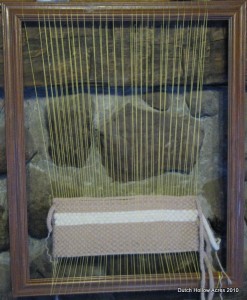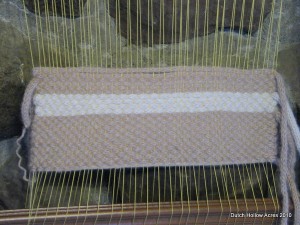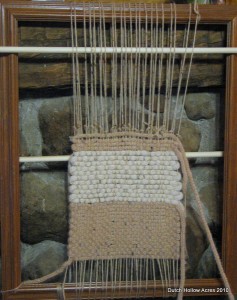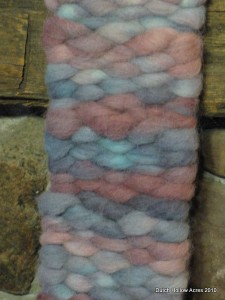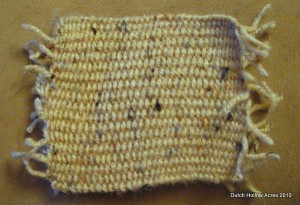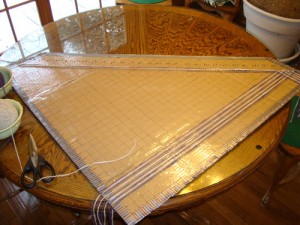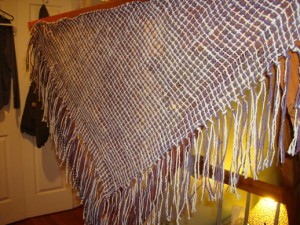Hello again everyone! Well this is year 2 of using my Big Bale Buddy. Yes it’s still in one piece with no rips or tears (that I didn’t purposely put there). Click Here for Year 1 Review
This year I have a new hay supplier and the bales I’m feeding are smaller than the 4×5’s I had last year. Which means my Large Buddy is too big for my new hay. Whatever, since my buddy is now 2 years old and is out of warranty I opted to “modify” it to work with my current hay bales. Well, let me tell you about my experimentation this year.
– Attempt 1 – I put the “to large” buddy on the first bale and set it out as usual. The horses almost immediately figured out that the buddy was too lose and pushed it down the bale and proceeded to make a mess. Errrr.
– Attempt 2 – had me cutting a little hole and pushing a fish tape all the way through the “elastic” part of the buddy. My hope was to back pull a rope and use that to cinch up the top so it would remain tight. FAIL. The rope broke and the area was too tight to work in.
– Attempt 3 – I happen to have a Shires Large Small Mesh Hay Net hanging around. I thought what if I make a slow feeder out of my buddy. I punched holes in the buddy below the reinforced edge every 4-6 inches or so. I then used an old nylon lunge line that was missing it’s snap end. I wove the line though the buddy and then though the net all the way around and secured it with a knot. After a few tries I learned that you always want to weave feeding the line from the inside to the outside of the buddy and to pull it tight with every weave cinching up the top.
Tada! Slow Feeding my round bale. It’s a time consuming process though. About 5 min to get the bale out and put the Big Bale Buddy on as usual and then another 15-20 minutes to weave the hay net into it.
I check the buddy every day to make sure nothing has broken, and that the hay net is still secure and no holes are forming where a hoof could get caught.
Feeding the round hay bale with a slow feeder is totally worth it. My “naked” 500lb bale with 3 gluttonous horses only lasted from Sat – Thurs, 6 days. My hay mesh modification extended the life from putting the bale out on Saturday and not having to put another one out until the following Tuesday. That’s 10 full days AM and PM of the horses eating off of it.
If I am doing the math correctly; 500lbs over 10 days = 50lbs of hay per day being consumed vs. 84lbs being consumed per day without the saver.
NEWS UPDATE: Of course just after I figured this whole slow feeding thing out the folks at Buddy Inc have come out with a full size slow feeding hay net that covers the entire round bale and even large square bales. I think I’ll purchase one and test it out and give you all my 2 cents about it!

